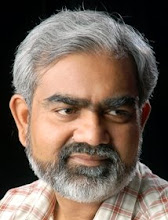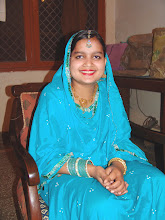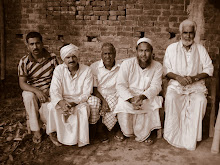THE SCOURGE OF KALA AZAR
ANJUM NAIM
Not far from Hajipur city, adjacent to Patna, the capital city of Bihar in India, is situated a Musahari hamlet about five miles away, resembling almost like an island where even people from nearby areas dread to tread. Completely immersed in intoxicants, sitting a few yards away from his dilapidated shanty, Sinesar Manjhi is desperately trying to shut his eyes from the unfolding reality. Just outside his hutment subjected to the vagaries of nature, his two ailing sons and a daughter sit blank-faced staring blindly at the people passing by. Gita Devi from a neighboring village, who goes around with her husband and social activist, Sudheer Kumar Akela Ji, assisting the people of the village in medical treatments and funeral services says: “Sinesar Manjhi’s wife, two daughters, a sister, brother-in-law, nephew, niece, brother, sister-in-law and two more nieces have already been devoured by the deadly Kala Azar. There is scant hope of the other three children surviving for more days.” “Who all can get treated for the ailment?” she questions. “Twenty people have succumbed to death and another fifty have been taken seriously ill in this hamlet alone.”
Another villager, Jalandhar Ram got his wife treated in whatever best way he could but all in vain. As if destiny had more in store for him, he is now counting the breath of his two children, who hang precariously between life and death. Dante’s words, “I did not die, but nothing much of life remains”, stand so glaringly true here. “Whatever I had was spent on the treatment of my wife. What more do I have to put at stake on my adult children and who knows whether they’ll live to see the next dawn?” he laments. Jalandhar Ram has related his entire ordeal in a single breath even as his moist eyes remain despondently affixed at his son, Bhutto Kumar and daughter, Pinkoo lying on broken wooden cots. He has already got two vials of the expensive drug Fungizone purchased from open market and administered to both of his children; however, the complete course of medicine runs over ten vials of the drug, for which he needs another six thousand rupees, a figure which is astronomical to him whatsoever. “Why don’t you visit a government hospital?” Akelaji replies, “The condition there in the hospital is pathetic. On going to the hospital, the compounder there escorts the patients to a private doctor, warning that only your dead body would come out of the hospital, if you go there. People in distress tend to run towards even the dimmest ray of hope. Also, not everyone has access to district hospital.”
Former Health Minister and a renowned expert on Kala Azar, Dr. C.P. Thakker confirms, “The prevailing situation is not restricted to Jamalpur Musahari alone. It is present in 31 out of the 38 districts in Bihar, with the deadly disease assuming alarming proportions especially in the Terai belt stretching from Hajipur to Nepal border. Lakhs of people are affected by Kala Azar as of new. The official or non-official statistics available with us is only confined to the patients registering in government hospitals and this number exceeds 50,000.” “Those visiting private clinics for treatment and fail to afford the expensive medical treatment and ultimately succumb to the monstrous ailment, remain hitherto uncounted”, avers Dr. Thakkar. “Most of the deaths are due to failure in administering drugs on time or lack of affordability.”
Kala Azar, also known as Visceral Leishmaniasis in technical terms, is an ailment which has received scant attention over the years, according to heath experts. The disease affects over 5 lakh lives each year, out of which about 40 percent succumb to the disease. Therefore, the disease turns out to be the third most fatal disease after heart diseases and cancer. However, since it is confined to rural and most backward areas of developing countries like India, Nepal, Bangladesh, Sudan, Brazil, appropriate measures and concerted actions were not initiated to stem the menace. The same story goes for all other tropical diseases besides Kala Azar, which normally plague the most downtrodden people of the world. The response has been mostly disheartening. As per the data of World Health Organization, nearly 1400 drugs made their way into global markets during the period between 1975 and 1999, however merely 13 of them were meant for the treatment of tropical diseases. The biggest issues concerning Kala Azar have been that of availability, affordability and accessibility of drugs. Dr. Thakker adds, “Although the early instances of Kala Azar in Bihar date back to about a century back, however because of the continuous spray of DDT until 1964 as a part of program to eradicate Malaria, the sand fly mosquitoes have not been able to breed much. However, since the spray program has been stopped in 1964, the decade of 70s saw a sharp spurt in Kala Azar cases. By 1977, Kala Azar had assumed alarming epidemic proportions in four districts of Bihar- Vaishali, Muzaffarpur, Sitamarhi and Samastipur. Nearly 1.25 lakh cases were registered, out of which 4700 people succumbed to death. In those days, no other drug was available besides Sodium Antimony Glauconate and this too did not turn out much effective. Thereafter, the DDT spray program was initiated once again and there were visible improvements in the 80s. Not to be cowed down, Kala Azar resurfaced assuming demonic proportions in 1991-1992 and the number of patients rose to a staggering 2.5 lakhs, while over 10,000 deaths were reported. Dr. Thakker says, ‘it seemed as if the situation prevailing in 1976-1977 had resurfaced’. Perceiving the gravity of situation, the state government this times around has constituted a task force on Kala Azar under the Chairmanship of Dr. Thakker, whose mandate is to make available drugs at low cost and bring about large-scale reforms in the health sector, in order to prevent attacks of the sand fly mosquitoes. Dr. Thakker further adds, “The situation has improved significantly since then and we do have certain effective medicines. Amphoterein-B despite being a little costly is an effective medicine with lesser side effects. The American pharmaceutical company One World Health has also come up with its own drug Paromomycin, which is presently undergoing Phase IV of clinical trials. So far, the results have been fairly positive and it could turn out to be the least-cost drug”. Dr. Pradeep Das of the Rajendra Memorial Research Institute of Medical Sciences for research on Kala Azar in Patna, feels, ‘if the entire course of Paromomycin could become available in just 10 dollars as the company claims, it will be a revolutionary step towards the treatment of Kala Azar’. Mireille Cromin Mather, the Director (Communications and Outreach) at the San Francisco based non-profit pharmaceutical company, institute of One World Health says with pride, “If all goes planned, paromomycin will soon be available for $ 10 a cure-Just one twentieth of what treatment now costs in Bihar.
It is worthy of mention that the founder director of the Institute, Victoria Hail had a visit to Bihar in 2000 and then in her words, ‘she dedicated herself to Kala Azar’. The Institute for One World Health is working closely with the Indian Council for Medical Research (ICMR) and the clinical trial was established with the funding from the Bill and Melinda Gates Foundation.
Gland Pharma limited, the Hyderabad, India based drug manufacturer, working with One World Health and other collaborators, received regulatory approval from the Drug-Controller General-India (DCGI) for Paromomycin IM injections a treatment for Kala Azar and Grand Pharma has agreed to act as the global manufacturer to ensure access to all those that need it and as Mireille Mather said “at a markedly reduced cost-approximately $ 10 USD per 21-day course of therapy.’’
Dr. Pradeep Das, the Director of Rajendra Institute, the government institute where the clinical trials of Paromomycin are currently underway admits that, ‘at present, about 50 patients are under treatment at the institute. Our main focus is on analyzing the efficacy of the drug and minimization of its side effects. So far, there have been no major side effects nor has there been any question mark over its efficacy. Its effective rate has been 93.4; therefore this drug may be considered most safe, effective, and affordable. Albeit, now the focus should be on making it accessible as well, to maximize reach. Mierielle Mather avers, ‘these issues have been at the top of our priorities and that is why, we are working alongside the local NGOs and medical experts. On the one hand, where the institute for One World Health has established its branch office in Patna and is involved in gathering patient data from various regions after conducting surveys in the affected areas, it is also contempting training programs for physicians practicing in small, remote areas, because these local doctors play an extremely crucial role. Together with this, efforts are also being made to spread basic awareness amongst the common folk about this disease, since it is vital to be in the know about the alarming impacts of the disease, how it spreads and how can one protect himself from the menace.
People are prematurely succumbing to this monstrous disease in dozens. With no help from any quarter, no money for treatment, no accessibility and no proper government support, people seem to be fast losing the one thing that they possessed – HOPE. Or in the words of Victorial Hail, the founder of One World Health, ‘I had never seen such hopelessness on the faces of people, until I saw Kala Azar!’
Wednesday, November 19, 2008
Subscribe to:
Post Comments (Atom)




















No comments:
Post a Comment